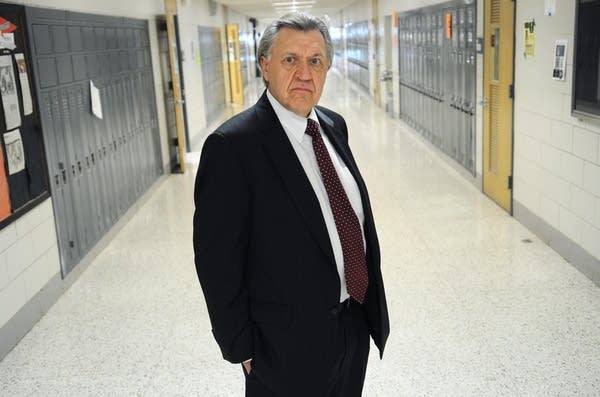Anoka-Hennepin disputes bullying-suicide connection

Anoka-Hennepin School District leaders are challenging what they say is an unproven theory that a string of student suicides can be tied to bullying.
Anoka-Hennepin is the state's largest school district, and six district students have committed suicide over the past 15 months.
District leaders say they're doing everything they can to help students who might be suicidal, but also say the district has no evidence that bullying caused those suicides.
District officials didn't conduct a formal investigation into the student suicides, but to figure out why six students took their own lives, they had a series of conversations among district officials, as well as with parents and others who knew the students.
Create a More Connected Minnesota
MPR News is your trusted resource for the news you need. With your support, MPR News brings accessible, courageous journalism and authentic conversation to everyone - free of paywalls and barriers. Your gift makes a difference.
The district's conclusion calls into question a statement that's been repeated often: that bullying caused some of these students to take their own lives.
Not the case, according to a voicemail that Anoka-Hennepin Superintendent Dennis Carlson sent to staff.
"Based on all of the information we've been able to gather, none of the suicides were connected to bullying or harassment," Carlson said on the message.
Carlson also said that there's no proof district employees have ever stood by while a student was bullied, as has been alleged at recent school board meetings.
Carlson says he sent that message because the notion that bullying -- and only bullying -- had caused some of the suicides was now being taken as fact, citing two recent newspaper editorials he's seen.
"People are trying to simplify things and they're trying to make some sense of it, and it's an extraordinarily hard thing to make sense of," Carlson said. "But to jump to simple conclusions, I think, is a real mistake. And to blame us for those simple conclusions is something that is very hurtful to our staff when we're working so hard to keep kids alive."

Carlson added he's not trying to deny that bullying happens, but he said there are often multiple factors that drive a student to suicide. And it's not fair, he said, to single out one and blame the school district.
The district's conclusion doesn't sit well with Tammy Aaberg. Her son Justin, who was gay, killed himself this past summer. She said she can't say for sure that an act of bullying caused Justin to hang himself.
"I don't know what the last thing was to drove him over the edge," she said. "I don't have proof of his last day."
But Aaberg said that's less important than the fact that she's knows Justin was bullied and the district, she feels, isn't an inviting place for some students.
"So many kids have come to me on Facebook that aren't even in the district anymore that have dropped out or are in alternative schools -- that have been bullied and they didn't do anything," she said.
Since her son's death, Aaberg has pushed the district for policies she says would make schools more welcoming for all students.
The claim that bullying didn't cause any of the suicides was also disputed this week by a teen who told school board members that his friend, one of the suicide victims, killed herself because she'd been bullied so much. District officials are now looking into that claim.
Superintendent Carlson said suicide is an issue that requires mental health resources, and there aren't currently enough of those resources for children. But Carlson also says schools can't be expected to be the only player in trying to meet those needs.
